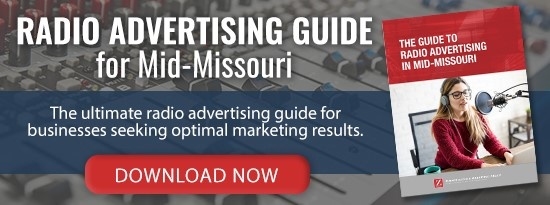Missouri Marketing Resource Blog

Confessions of a Millennial: Digital Radio Backfired on Me

FOMO. The “fear of missing out.” Older generations may find this use of an acronym (not to mention the whole idea of FOMO itself), to be utterly ridiculous. But to millennials, FOMO is oh, so real.
The Millennial generation wants in on everything as soon as it happens. Why? Because we’re used to it. Since joining our first social network (shout-out to MySpace!) close to fifteen years ago, we’ve been receiving instant updates on all of the latest social topics and trends for more than half of our lives. This on-demand mentality has only increased as today’s latest updates have never been so instantaneous. Missing out on “what’s new” has morphed into a legitimate concern for millennials everywhere, leading to the creation, and validation, of FOMO.
Today, I have a confession to make. For a brief period of time, I let my desire for immediate satisfaction get the best of me. I wanted the specific music I was craving to be available to me at the drop of a hat. I felt the need to listen to a personalized, on-demand mixture of what I deemed to be “new” and “old” music. Sounds good in theory, right? Spoiler alert: it backfired.
I decided to make the switch from traditional radio to, solely, digital radio. During my morning and afternoon commutes to and from work (and everywhere else I went), the only music that I listened to was accessed via my new Spotify account. This substitution was extremely fulfilling. At first. Here’s how things went so south:
As mentioned, having instant access to the songs I wanted to hear was great; however, the reality is that songs get old. Humans (millennials, especially) crave what’s new. I began to hear co-workers and friends singing unfamiliar songs and discussing how much they loved a certain artist’s new single. This was all news to me, and I didn’t like how it felt to receive this information in passing as secondhand knowledge. This continued until it seemed like an everyday part of life. When it came to knowing the latest music, I was at the mercy of others. I, along with everyone else in my life, was surprised at just how out of the loop I could be in such a seemingly short amount of time. Not only did I know nothing of current, popular songs, but I was even falling behind in my daily news updates. I felt completely unattached and far removed from my own generation. FOMO officially set in.
Dabbling in solely digital radio caused me to have a great epiphany. Radio was the only reason I even knew what songs to search on Spotify in the first place. Radio was the way I learned what was popular. Radio was my best chance at an instant update!
I’m not going to claim that I angrily canceled my Spotify account. I still listen to Spotify when I’m in the mood for a particular song or artist. However, the sole use of digital radio taught me an important lesson and changed the way that I view traditional radio as a whole. In order to feel instantly updated, traditional radio must be incorporated into my weekly, if not daily, routine. Not only does it cause me to feel connected through up-to-date music, it also keeps me informed on current events, the weather, and local happenings. Radio is the perfect partner in curing a millennial’s FOMO woes.
My experience supports the overall experience of Millennials across the country. Whether they have learned of the necessity of radio via a trying path similar to my own or not, the statistics support the fact that Millennials recognize traditional radio’s relevance. According to a recent Nielsen study, traditional radio reaches 91.3% of all Millennials during any given week. This same study reported that 66.6 million of the 243 million Americans listening to radio each week are…you guessed it…Millennials! Eleven and a half hours of a Millennial’s average week are spent listening to traditional radio. Nearly 75% of a Millennial’s listening hours occur while they are “outside of the home and close to making purchase decisions” (Nielsen, “A Millennial Majority for Audio, Today”). This bodes well for businesses who utilize radio advertising to tap into this promising market.
If you ever hear that the Millennial generation does not appreciate traditional radio, remember my story and these statistics. I’m here today to tell you that I tried the alternative, and eventually, returned back to the tried-and-true method of using traditional radio to keep me instantly updated on current music, trends, and topics. The FOMO I experienced during the process was no fun for a Millennial like me, but some people just have to learn the hard way.
